Congestive heart failure, commonly known as brisket disease, mountain sickness, big brisket or high mountain disease, poses a greater threat to the North American cattle industry than we currently realize.
Historically, people associated heart failure with high altitude because the first investigation of congestive heart failure was performed 100 years ago in South Park, Colorado, located at an altitude of approximately 10,000 feet.
It was concluded that death from this strange new disease occurred due to “exhaustion of the heart” and only at altitudes over 8,000 feet.
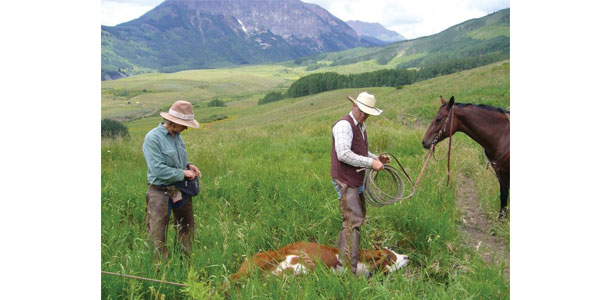
Dr. Tim Holt of Colorado State University has been studying brisket disease for 35 years and has tested cattle at various elevations from sea level to 15,000 feet. He uses a test developed in humans for measuring pulmonary artery pressure (PAP).
By measuring PAP, cattle at most risk of heart failure secondary to pulmonary hypertension can be identified and moved to lower elevation.
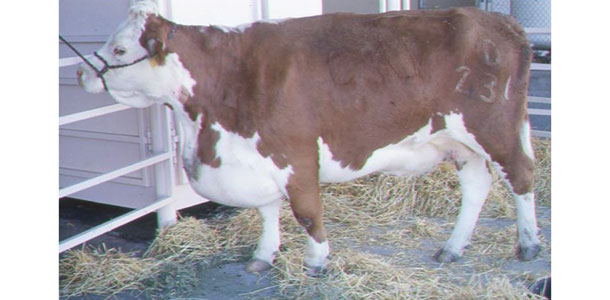
He explains that the low level of oxygen in the air at high elevations causes the inner diameters of arteries in the lungs to contract and thicken, which increases blood pressure within the pulmonary artery and reduces blood flow through the lungs.
The extra effort needed to pump blood against the increased pulmonary pressure causes enlargement of the right side of the heart, specifically the right ventricle.
Eventually, the right ventricle becomes so enlarged that it loses its ability to contract. Ultimately, blood flow to vital body organs becomes inadequate, and the animal dies.
Holt explains that circulatory failure is due to inadequate forward flow out of the heart’s right ventricle, causing increased blood pressure in the venous system. It is this backup, or congestion, of blood in the venous system that explains many of the clinical signs associated with this disease.
Fluid is forced out of the vessels into the surrounding tissue, leaking through the blood vessel walls.
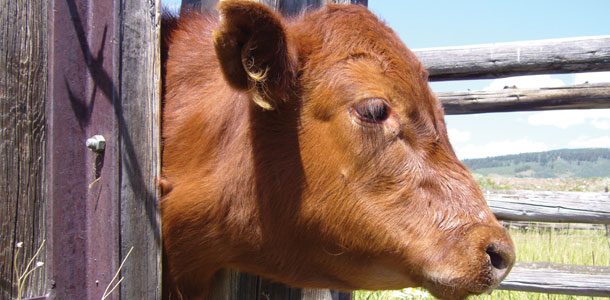
Common clinical signs of heart failure include swelling of the brisket, belly and jaw, hence the term brisket disease. Affected calves may also show watery scours as water is forced out of the veins and into the gut.
However, cattle may die from heart failure without ever showing signs of swelling of the brisket; it depends on how fast the disease develops.

Dr. Joe Neary of the Department of Animal and Food Sciences at Texas Tech University studied heart failure in cattle for his doctoral degree at CSU under the guidance of Drs. Holt and Frank Garry.
Neary says it can be extremely hard to differentiate between the early stages of brisket disease and respiratory disease. In both diseases, calves may have a rough hair coat, droopy ears, high breathing rate, sluggishness and glazed eyes.
“Calves presenting with signs of pneumonia may actually have brisket disease, pneumonia or both. I’ve been surprised many times by necropsy findings,” he says.
So too were feedlot producers in the Nebraska Panhandle, at an altitude of approximately 4,000 feet, when they identified heart failure in late-fed cattle by performing necropsy examinations. Neary explains that PAP values may be higher in late-fed cattle at moderate altitude than in pre-weaned calves at high altitude.
“In one study, we followed calves from birth to slaughter and found that PAP values were actually higher in the late feeding period at 4,000 feet than they were at 6 months old at an altitude of 7,000 feet.
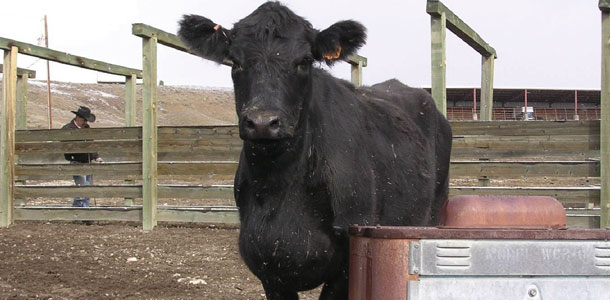
The increase in PAP through the feeding period explains why death from heart failure typically occurs in the late-fed cattle,” he says.
“Thanks to Feedlot Health Management Services and Paul Morley [of Colorado State University], we have epidemiological data from 15 North American feedlots which shows that cattle typically die from heart failure around 130 days on feed, which makes this a particularly costly disease, especially at a time of record beef prices,” Neary says.
“The risk of heart failure is higher in feedlots located at higher altitude, perhaps because cattle are more likely to be sourced from higher-altitude regions, or the altitude itself increases the risk of pulmonary hypertension, and consequently, heart failure. What is particularly concerning, however, is that heart failure is occurring even in feedlots located at lower altitudes,” he says.
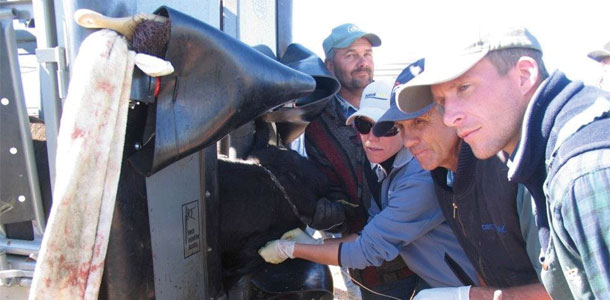
Heart failure secondary to pulmonary hypertension, commonly known as ascites, is also problematic in broiler chicken production and was first thought to be a high-altitude disease problem. “Ascites was first reported in the late 1960s at high altitudes – more than 10,000 feet."
"But within 20 years it was also reported in fast-growing broilers at sea level. Researchers found that rapid growth and cold temperatures are leading risk factors of ascites in chickens,” Neary says.
“Cold temperatures and rapid growth also increase pulmonary pressures in cattle. There are too many similarities to ignore. Reports estimating the cost of ascites to the U.S. poultry industry range from hundreds of millions of dollars to upwards of one billion dollars. Fortunately, the U.S. broiler industry is predominantly located at low altitude, and the chickens are housed, which allows regulation of environmental conditions such as temperature,” he says.
“Unfortunately, the majority of feedlots are not located at low altitude, and we can’t control environmental conditions. Therefore, the feedlot industry faces a greater challenge if the incidence of heart failure continues to climb, which I believe it will. As an industry, we need to recognize that congestive heart failure, or brisket disease, is not a disease of high altitude; it is merely exacerbated by high altitude.”
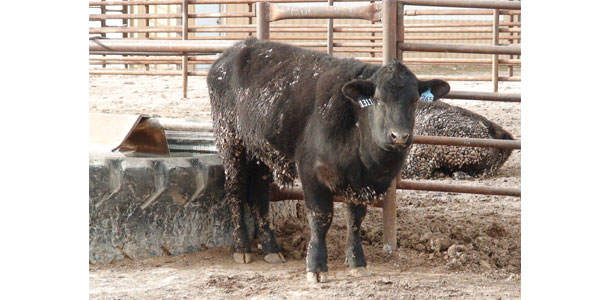
Selection for higher performance (faster-growing animals) may be the reason we’re seeing more incidence of late-term feedlot deaths, says Mark Enns of Colorado State University. “There is a hypothesis that over the past several decades we have selected beef cattle for faster growth rate and have now exceeded their lung capacity."
"Whenever they get stressed (whether the stress is high elevation, excess body weight with a lot of fat, low oxygen level, etc.), we start to see this. I am not sure we have enough data yet to support this hypothesis; we are still in the process of gathering data,” Enns says.
“Domesticated cattle no longer need to outrun predators to survive, so we have removed the natural selection pressure from the heart and lungs and placed our own selection pressure on production traits instead,” Neary says. “This has created an oxygen-hungry animal with reduced ability to supply oxygen via the heart and lungs. This may explain why we are seeing congestive heart failure occur with increasing frequency and at lower altitudes.” ![]()
Heather Thomas is a freelance writer based in Idaho.
To read an article on developing the PAP EPD click here.
PHOTOS
PHOTO 1: This herd lives at high elevation and loses 10 percent of calves each year to congestive heart failure between spring turnout and fall weaning.
PHOTO 2: This calf was dull, with droopy ears, high respiration rate and has been roped for treatment – and later died from heart failure secondary to pulmonary hypertension.
PHOTO 3: A Hereford cow with brisket disease
PHOTO 4: A calf with brisket disease
PHOTO 5: Joe Neary
PHOTO 6: An Angus cow with brisket disease
PHOTO 7: Joe Neary and Tim Holt are shown PAP testing yearling bulls.
PHOTO 8: An Angus calf in feedlot with signs of congestive heart failure. Photos courtesy of Joe Neary.






